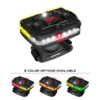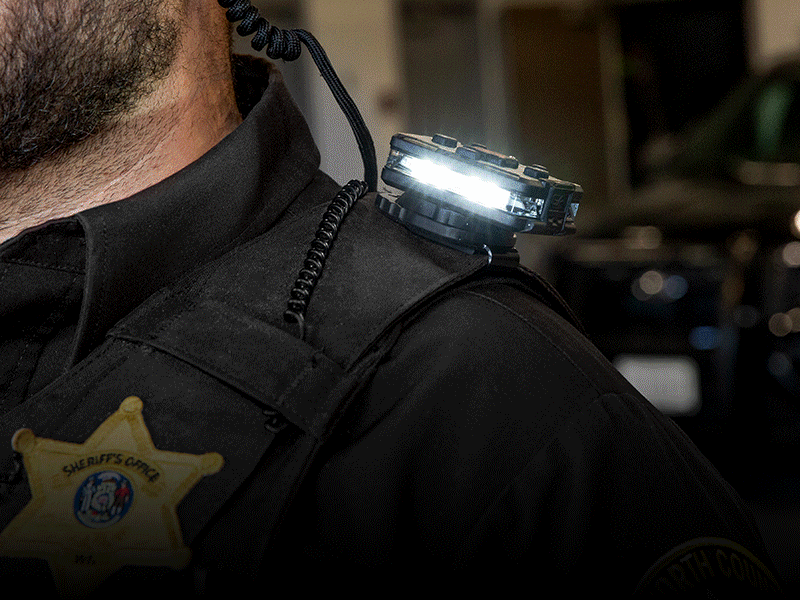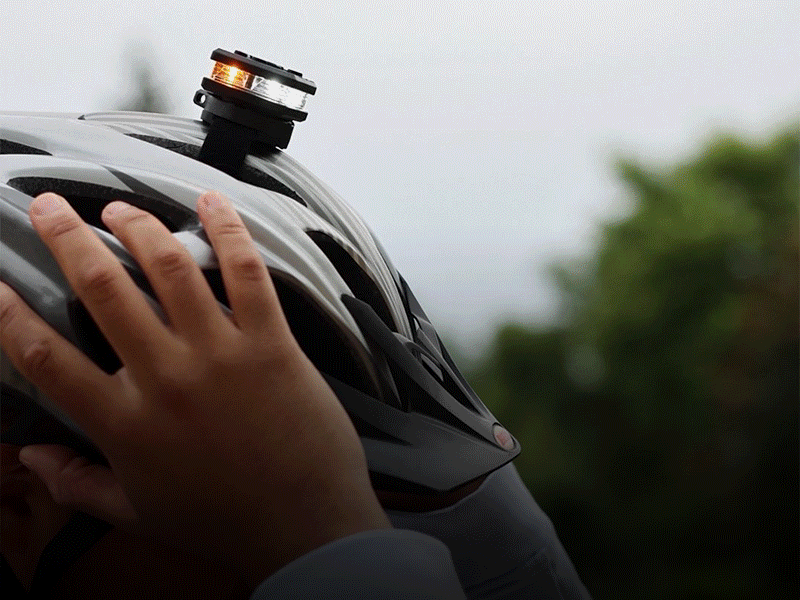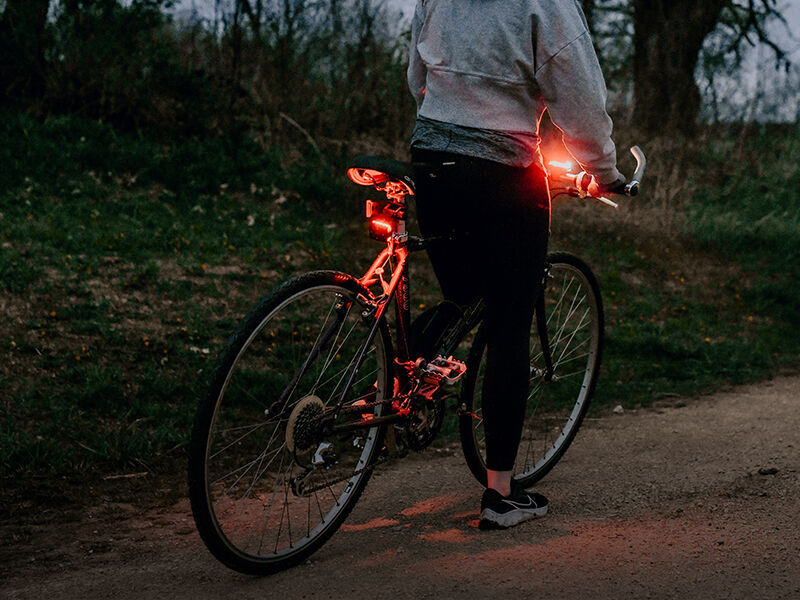Louisiana Emergency Vehicle Light State Statutes
Louisiana Emergency Vehicle Light State Statutes
On a vehicle the lighting will tell you a lot about the role and purpose of the vehicle. Every type of emergency vehicle has its own specific colors of light and light flashes which they use to identify. To avoid any confusion, Louisiana very rigidly restricts lights for emergency vehicles. In the laws of the state there are specific statues which address lighting. Here is what you need to know in the state of Louisiana about emergency vehicle lights.
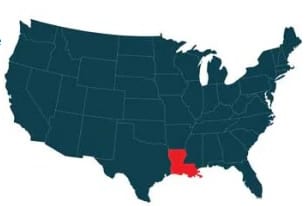
Police lights
The Louisiana statute 32:318(C) provides plenty of detailed instruction about the type of lights used on vehicles used by law enforcement. Police vehicles are required by law to have two signal lamps mounted as high and as wide as possible, displaying red flashing lights from both the front and back of these vehicles. They are also allowed on the vehicle’s roof to have a rotating red light, instead of a flashing red light. All of these red lights have to be bright enough to be visible during normal sunlight at 500 feet. Those lights will display red police lights alternately. Law enforcement vehicles are allowed to use blue colored emergency electric lights instead of the red lights that glow towards the vehicle’s front.
Fire truck lights
Fire truck light policy changes depending on whether the object is privately owned or owned by the public. For the fire truck department, Statute 32:318(C) applies both to private and publicly owned vehicles. This law requires that they have signal lamps that are mounted as high as possible on the vehicle. This lamp must display two lights flashing red at the front, and two lights flashing red at the back. Instead, fire fighting companies are allowed to choose to have a large rotating alternating red and white light on the roof enclosed, if desired, in a clear dome. Under Statute 32:318(H), any publicly owned fire truck may use blue colored electric lights mounted on the vehicle’s rear as long as these lights do not exceed 50 percent of all visual lights on the vehicle. Private fire lorries may not be using blue lights.
Volunteer firefighter lights
If a vehicle belongs to a volunteer firefighter, the regulations laid down for standard fire trucks will not be required for them. Statute 32:24 instead explains that they will need to have a red light visible from the front of the vehicle. This red light is supposed to be a flashing light placed either on top of the vehicle or dashboard. It doesn’t need to be permanently attached there, so a volunteer firefighter can only choose to put it there while responding to an emergency. Volunteer firefighters can only use an emergency signal when responding to a fire alarm so when returning from the alarm, they should not turn the light on.
Ambulance lights
There are a few different laws in place in the state of Louisiana regarding ambulance lights, and most of the ambulance lighting is very similar to fire truck lighting. General ambulance lighting falls under Statute 32:318(C) which stipulates that any authorized emergency vehicle shall have signal lamps mounted as high and laterally as wide as possible. The lights must be a flashing red colour, with two lights visible from the vehicle’s front and back.Ambulance vehicles have the option to use a rotating red light on the roof instead of the flashing red lights and statute 32:318(H) also allows them to add blue lights on the vehicle’s rear. If blue lights are used, the blue lights cannot exceed more than 50 per cent of all vehicle lighting.
Tow Trucks Lights
Louisiana state law has no specific tow truck requirements. So tow truck drivers have plenty of leeway in choosing their lights. They simply need to make sure that any lighting they choose meets the 32:309 statute which specifies the acceptable colors for lamps. Any front lamp must be an amber colour, whereas any back lamp may be red, amber, or yellow. Tow trucks fall under statute 32:327 C which allows flashing lights on the presence of a hazard in vehicle traffic that requires unusual care when approaching or passing. Most tow trucks in the state of Louisiana therefore choose to use traditional front and rear lamps, along with a row of flashing amber or yellow lamps, as drivers approach.
Construction vehicle lights
Most construction vehicles can choose to obtain lighting that meets the regulations set out in statute 32:320.1 regarding vehicle hazard warning signals. This statute states that if the vehicle could present a hazard to other cars, a vehicle may equip flashing lights to warn other drivers. This allows construction vehicles to mount signal lamps spaced wide apart on the front and show white, yellow, or amber lights flashing simultaneously. Lights in the rear should flash light in an amber or red shade at the same time. Construction vehicles equipped with warning signals should be bright enough if the vehicle is 80 inches or larger to be viewed from 500 feet away. If the vehicle is less than 80 inches, only 300 feet away in sunlight the lights need to be visible.
Utility vehicle lights
Most utility vehicles are trucks, truck tractors, or trailers, and they would have to meet the specifications set out in 32:308 Statute. The law requires that they have amber side marker lamps and rear and front visibility lamps to help other vehicles view the car more accurately. By displaying a white or amber lamp from the front and a red lamp from the back if there is not enough light to make the utility vehicle visible, utility vehicles will need to satisfy the statute 32:314 when parked. Utility trucks may choose to install danger signals as set out in Statute 32:320.1 to further alert cars of their position. It allows them to use blinking signals at the front in a white or yellow shade, and flashing signals at the back in an orange or red shade.
Pilot vehicle light
Pilot vehicles are the vehicles which are accompanied by an oversized load to warn other drivers. Under Statute 32:388, a vehicle is technically not a pilot vehicle capable of escorting an oversized load unless it has an operating license. To qualify as an escort vehicle, the vehicle’s driver will need to go to any Weights and Standards Police Officer and get pilot vehicle approval. They will be able to display the lights once they have the license. Louisiana law requires that the pilot vehicle be fitted with an amber emergency warning lamp which includes bar lights, LED strobe lights, spinning lights and stationary lighting. If the lamp is a dome shape, it must be at least 9 “long and 4” tall.
Security Vehicle Lights
Under Statute 32:327 and 32:318, safety vehicles are not allowed to use the blue or green lights common in other states if they wish to drive on the road. Defense vehicles in Louisiana don’t get any special lighting exemptions. It means they can only use the standard lighting set out in statute 32:303 if they plan to drive on the road. White headlamps, red tail lamps and amber signal lamps will be included in this package. However, the law allows individuals on private property to use whatever color they like, so vehicles that patrol mall parking lots and other regions often use flashing green or blue lights to attract attention.
For more information on what lights are available to you, please call your State Highway Patrol office at: 225-925-6006
* Please note that these numbers are what we can currently find, and the numbers may have changed since this listing.

